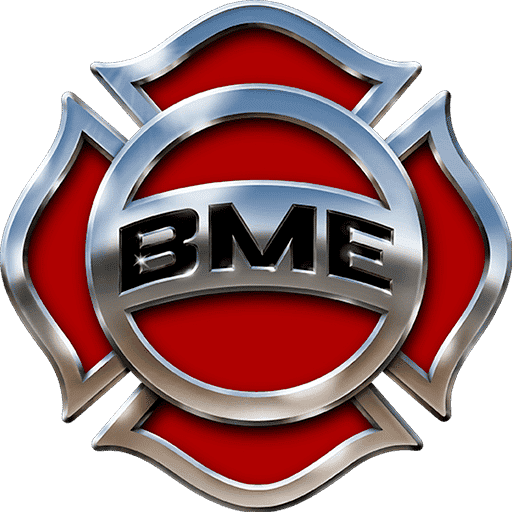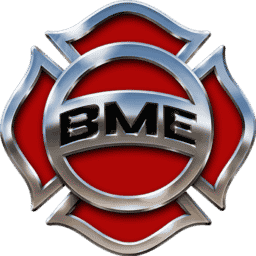 In November of 1942 as World War II persisted in Eastern Europe and President Franklin Roosevelt waited anxiously to hear about the progress of a Los Alamos nuclear lab, a group of revelers met on a cold Boston night to celebrate. It was the Saturday after Thanksgiving and the mood was festive as an estimated thousand people crowded into a club in the Bay Village area of Boston called Cocoanut Grove. At around 10:15, the pianist Goody Goodelle performed on a revolving stage adorned in artificial palm trees in the dimly lit Melody Lounge downstairs. Official reports state that a possible origin of the fire at the Cocoanut Grove stemmed from a match lit by Stanley Tomaszewski, a 16-year-old busboy, to investigate an extinguished low-powered light bulb that was used to illuminate the basement lounge. The flames that emanated from that match were to set off a series of horrific events that would lead to 492 people, 166 injured, and the infamous title of the deadliest nightclub fire in U.S. history. According to District Fire Chief John P. Vahey’s November 1970 report to the Fire commissioner, the flames were first noticed in the fronds of the artificial palm trees surrounding the revolving stage. The blaze quickly spread to the false cloth ceiling used as a decoration for the stage. As the fire started to gain strength employees attempted to douse the fire with water and remove the artificial tree and fabric-covered false ceiling away from the corner of the lounge. Ironically, by removing the false ceiling this allowed the fire the oxygen it needed to spread throughout the basement and shower patrons with sparks and burning shreds of fabric as it engulfed the room. At this point, the Cocoanut Grove fire was an unstoppable force that demonstrated to the World War II era firefighters and building code inspectors the need for standards that preserve human life during fires that involve crowded buildings. As the fire spread throughout the basement, it quickly searched for a source of oxygen to continue its destructive path. The fire found its passageway through the 4 foot stairway leading up to the ground floor. The stairway acted as a chimney as the blaze raced past horrified patrons who scrambled up the narrow stairs looking for an escape from the choking smoke and unbearable heat. As the fire reached the ground floor it emitted a fireball that burst through the front entryway and spread through the remaining club areas and across the dance floor as the orchestra was beginning its evening show. The flames spread faster than the patrons of the Cocoanut Club could move and within five minutes smoke and fire engulfed the entire nightclub. The 492 souls that weren’t granted an attempt to escape were instantly overcome by smoke as they sat in their seats. The victims of this heinous fire who weren’t initially killed by smoke and flames suffered the monumental task of trying to make egress out of the club and into the cold Boston night. As the fire spread throughout the club those still inside were plunged into darkness as the fire consumed the electrical infrastructure. Individuals who crawled through the smoky darkness trying to find exits were horrified to learn that all but one of exits of the club were locked. The club’s owner, Barnet “Barney” Welansky was known to be a tough boss who ran a tight ship. To prevent customers from leaving without paying, he had locked the exits earlier that night, concealed other exits with draperies, and even bricked up one emergency exit. As the patrons found the alternative exits locked, they started to rush to the entrance. Unfortunately for those involved, the exit through the main entrance was a single revolving door. The entrance was rendered useless as the crowd stampeded in panic and bodies piled up on both sides of the revolving door, jamming it until it broke. The revolving door soon became engulfed in flames by the oxygen-hungry fire as it leaped through the cavity and incinerated the desperate souls as they tried to escape through the jammed doorway. As fireman attempted to enter the building, it was necessary to douse the flames even to approach the door. After exit was made into the building the fire was extinguished in a matter of minutes, but the damage and full horror of what awaited the firefighters inside the building was to be studied and evaluated for decades to come. Fire Commissioner William Reilly’s probe started just a day after the fire on Sunday, November 29. Witnesses recounted the facts surrounding the circumstances of the fire origin, condition of the building, and what fire prevention methods were evident. A grand jury would later convict the owner of Cocoanut Grove, Barney Welansky, on one count of manslaughter and he would serve almost four years in Charlestown State Prison. As a result of the terrible tragedy, building codes were amended in the city and elsewhere in the US to outlaw revolving doors and ensure exit doors are clearly marked to aid egress in the event of fire. The influence of the fire also reached into the mandate of using non-combustible building materials during construction as well as the placement of emergency lighting and sprinklers within public areas. Although many lives were lost that day, this horrific tragedy shed light on building safety issues and sparked the implementation of health and safety codes still used to this day, saving countless more lives. Sources: + Saffle, J R. “The 1942 Fire at Boston’s Cocoanut Grove Nightclub.” American Journal 0of Surgery., U.S. National Library of Medicine, 1 Dec. 1993, www.ncbi.nlm.nih.gov/pubmed/8273835. + Vahey, John, Boston Sparks Association (1942). Design for disaster : Cocoanut Grove Fire, November 28, 1942. (Report No. 1). Boston, Massachusetts : Boston Sparks Association, Inc. + Nugent, John D. “Khazar Gangster Caused 492 Dead in Biggest Nightclub Fire in World History 75 Years Ago.” Khazar Gangster Caused 492 Dead in Biggest Nightclub, 16 Mar. 2016, johndenugent.com/english/khazar-gangster-caused-492-dead-in-biggest-nightclub-fire-in-world-history/. + Vahey, John, Boston Sparks Association (1942). Design for disaster : Cocoanut Grove Fire, November 28, 1942. (Report No. 1). Boston, Massachusetts : Boston Sparks Association, Inc. + Photo credit: https://www.boston.com/news/history/2017/11/28/cocoanut-grove-fire-memorial-75-years
In November of 1942 as World War II persisted in Eastern Europe and President Franklin Roosevelt waited anxiously to hear about the progress of a Los Alamos nuclear lab, a group of revelers met on a cold Boston night to celebrate. It was the Saturday after Thanksgiving and the mood was festive as an estimated thousand people crowded into a club in the Bay Village area of Boston called Cocoanut Grove. At around 10:15, the pianist Goody Goodelle performed on a revolving stage adorned in artificial palm trees in the dimly lit Melody Lounge downstairs. Official reports state that a possible origin of the fire at the Cocoanut Grove stemmed from a match lit by Stanley Tomaszewski, a 16-year-old busboy, to investigate an extinguished low-powered light bulb that was used to illuminate the basement lounge. The flames that emanated from that match were to set off a series of horrific events that would lead to 492 people, 166 injured, and the infamous title of the deadliest nightclub fire in U.S. history. According to District Fire Chief John P. Vahey’s November 1970 report to the Fire commissioner, the flames were first noticed in the fronds of the artificial palm trees surrounding the revolving stage. The blaze quickly spread to the false cloth ceiling used as a decoration for the stage. As the fire started to gain strength employees attempted to douse the fire with water and remove the artificial tree and fabric-covered false ceiling away from the corner of the lounge. Ironically, by removing the false ceiling this allowed the fire the oxygen it needed to spread throughout the basement and shower patrons with sparks and burning shreds of fabric as it engulfed the room. At this point, the Cocoanut Grove fire was an unstoppable force that demonstrated to the World War II era firefighters and building code inspectors the need for standards that preserve human life during fires that involve crowded buildings. As the fire spread throughout the basement, it quickly searched for a source of oxygen to continue its destructive path. The fire found its passageway through the 4 foot stairway leading up to the ground floor. The stairway acted as a chimney as the blaze raced past horrified patrons who scrambled up the narrow stairs looking for an escape from the choking smoke and unbearable heat. As the fire reached the ground floor it emitted a fireball that burst through the front entryway and spread through the remaining club areas and across the dance floor as the orchestra was beginning its evening show. The flames spread faster than the patrons of the Cocoanut Club could move and within five minutes smoke and fire engulfed the entire nightclub. The 492 souls that weren’t granted an attempt to escape were instantly overcome by smoke as they sat in their seats. The victims of this heinous fire who weren’t initially killed by smoke and flames suffered the monumental task of trying to make egress out of the club and into the cold Boston night. As the fire spread throughout the club those still inside were plunged into darkness as the fire consumed the electrical infrastructure. Individuals who crawled through the smoky darkness trying to find exits were horrified to learn that all but one of exits of the club were locked. The club’s owner, Barnet “Barney” Welansky was known to be a tough boss who ran a tight ship. To prevent customers from leaving without paying, he had locked the exits earlier that night, concealed other exits with draperies, and even bricked up one emergency exit. As the patrons found the alternative exits locked, they started to rush to the entrance. Unfortunately for those involved, the exit through the main entrance was a single revolving door. The entrance was rendered useless as the crowd stampeded in panic and bodies piled up on both sides of the revolving door, jamming it until it broke. The revolving door soon became engulfed in flames by the oxygen-hungry fire as it leaped through the cavity and incinerated the desperate souls as they tried to escape through the jammed doorway. As fireman attempted to enter the building, it was necessary to douse the flames even to approach the door. After exit was made into the building the fire was extinguished in a matter of minutes, but the damage and full horror of what awaited the firefighters inside the building was to be studied and evaluated for decades to come. Fire Commissioner William Reilly’s probe started just a day after the fire on Sunday, November 29. Witnesses recounted the facts surrounding the circumstances of the fire origin, condition of the building, and what fire prevention methods were evident. A grand jury would later convict the owner of Cocoanut Grove, Barney Welansky, on one count of manslaughter and he would serve almost four years in Charlestown State Prison. As a result of the terrible tragedy, building codes were amended in the city and elsewhere in the US to outlaw revolving doors and ensure exit doors are clearly marked to aid egress in the event of fire. The influence of the fire also reached into the mandate of using non-combustible building materials during construction as well as the placement of emergency lighting and sprinklers within public areas. Although many lives were lost that day, this horrific tragedy shed light on building safety issues and sparked the implementation of health and safety codes still used to this day, saving countless more lives. Sources: + Saffle, J R. “The 1942 Fire at Boston’s Cocoanut Grove Nightclub.” American Journal 0of Surgery., U.S. National Library of Medicine, 1 Dec. 1993, www.ncbi.nlm.nih.gov/pubmed/8273835. + Vahey, John, Boston Sparks Association (1942). Design for disaster : Cocoanut Grove Fire, November 28, 1942. (Report No. 1). Boston, Massachusetts : Boston Sparks Association, Inc. + Nugent, John D. “Khazar Gangster Caused 492 Dead in Biggest Nightclub Fire in World History 75 Years Ago.” Khazar Gangster Caused 492 Dead in Biggest Nightclub, 16 Mar. 2016, johndenugent.com/english/khazar-gangster-caused-492-dead-in-biggest-nightclub-fire-in-world-history/. + Vahey, John, Boston Sparks Association (1942). Design for disaster : Cocoanut Grove Fire, November 28, 1942. (Report No. 1). Boston, Massachusetts : Boston Sparks Association, Inc. + Photo credit: https://www.boston.com/news/history/2017/11/28/cocoanut-grove-fire-memorial-75-years
Get in Touch
Fields marked with an asterisk (*) are required.



